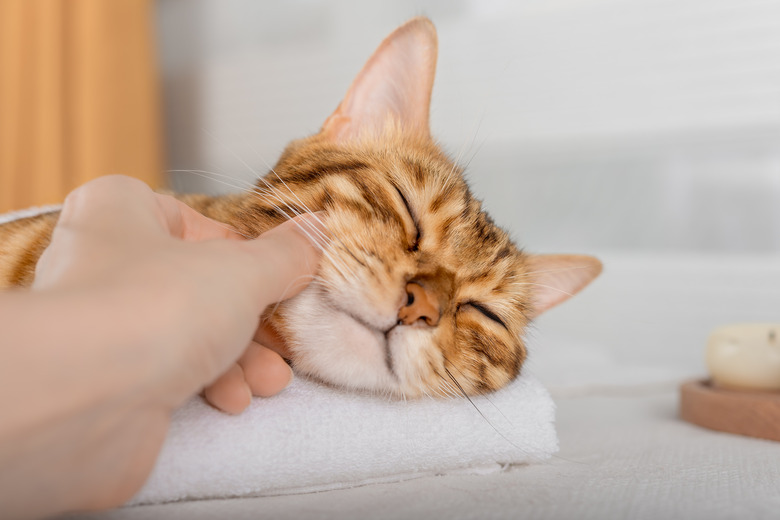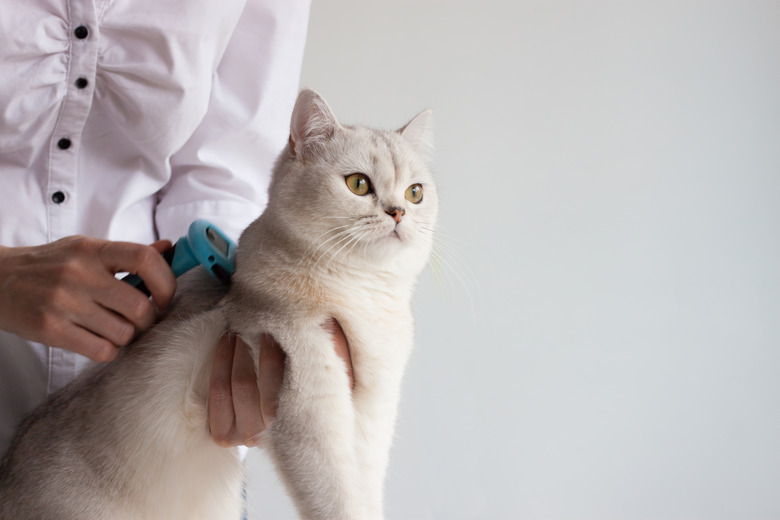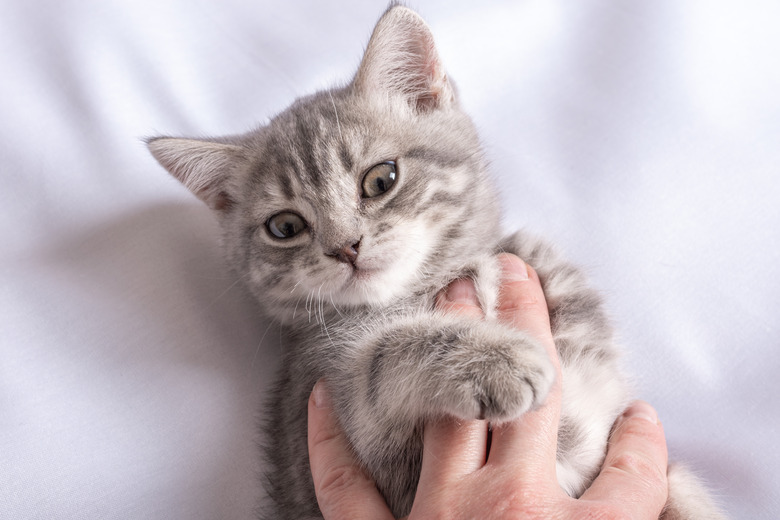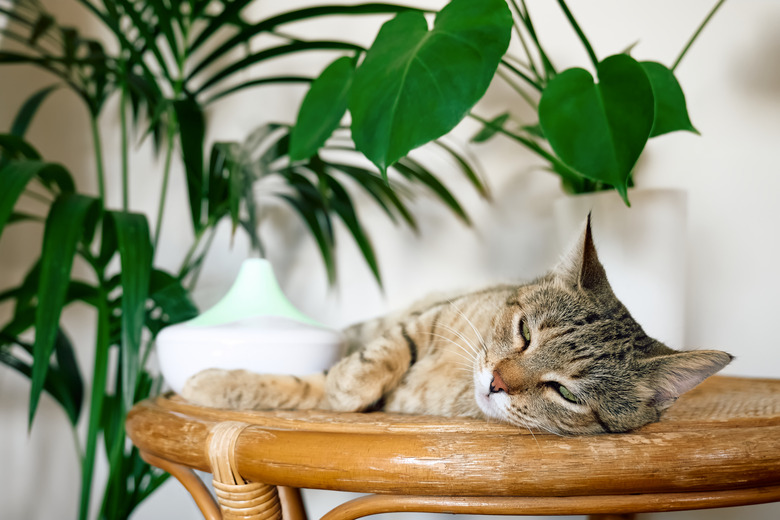How To Stimulate Cats With Constipation
Constipation isn't comfortable for anyone, including our feline counterparts, who can sometimes experience this condition as well. When a cat becomes constipated, measures should be taken to alleviate the issue, which can include stimulating a bowel movement with a gentle massage. A constipated kitten or cat is often not easy to treat. While the steps might be simple, many constipated cats tend to have other medical issues, and a cat with a painful belly can be challenging to work with. A veterinarian should be consulted in cases where constipation is a chronic issue.
Common cause of constipation in a cat
Common cause of constipation in a cat
There are four things that commonly cause constipation: hairballs, improper diet, pelvic injuries, and chronic renal disease. Hairballs often occur in long-haired cats, and an unhealthy diet that doesn't offer enough fiber or water can lead to difficulties in passing fecal matter, often resulting in straining and pain. A pelvic injury may also cause the pelvic canal to become too narrow to pass materials through it, and foreign substances, like string or toys, can cause blockages when swallowed.
Megacolon. In addition to these common contributing factors, a condition known as megacolon may also be a condition that leads to constipation in cats. Megacolon refers to a dilated colon in which the colon muscles become so weak that they cannot pass fecal matter. If there is greatly impacted fecal matter in the colon or if a tumor is detected, enemas, manual fecal extraction, and even surgery may be required.
Constipation can also be common in cats who are experiencing chronic renal disease or who are diabetic. Even though these cats tend to drink much more water than normal, they're also losing more water and can often be chronically dehydrated, a condition that readily leads to constipation because dry stool is harder for your cat to pass through their intestinal tract.
Symptoms of constipation in cats
Symptoms of constipation in cats
Like many animals, cats often don't like to show signs of pain, so your cat could be feeling quite uncomfortable from constipation without you even noticing it. But if you know what you are looking for, there are ways to tell if your cat is suffering from constipation.
Some common signs of constipation in your cat could include:
- Dry or hard stool
- Vocalization while
passing feces - Firm, hard abdomen
- Unsuccessful tries at
the litter box/no
cat poop - Lack of appetite
- Visible pain when defecating
- Tenesmus, which is
difficulty and straining when passing stool - Hiding from you
- Depression or lethargy
- Vomiting
Veterinarian treatment for cat constipation
Veterinarian treatment for cat
constipation
For prolonged constipation or constipation accompanied with acute pain, a trip to see your veterinarian is warranted. Depending on the level and underlying cause of your cat's constipation, treatment can vary from recommendations for supplementing your cat's diet with added fiber through psyllium (like Metamucil), canned plain pumpkin (not pie mix), or switching to a prescription diet. Don't add fiber to your cat's diet without talking with your veterinarian.
Your veterinarian may also recommend some form of medication, such as laxatives, stool softeners, or motility modifiers, which are medications that work inside the gastrointestinal tract to promote movement in the large intestine and colon. It's important not to give your cat human medications unless instructed to do so by your veterinarian because not all laxatives and stool softeners are safe for your pet.
Enemas for a constipated cat
Enemas for a constipated cat
In more severe cases of constipation, it may be necessary for your veterinarian to administer an enema. Because of the invasive nature of enemas and because manual removal of feces might be necessary, this generally requires that your cat be anesthetized for their comfort and safety.
Your veterinarian will likely also check your cat for any underlying health issues that could be causing the constipation, such as megacolon. Megacolon is when the digestive tract muscles have been overstretched and aren't capable of moving stool through the cat's system anymore. Surgical intervention may be necessary to repair the colon.
Additionally, if your cat has an underlying condition, such as diabetes or kidney disease, your veterinarian may ask you about your cat's water intake. In cases where an underlying condition is the cause of the dehydration, a DVM might recommend that pet parents provide IV fluids for proper hydration.
Massage for a constipated cat
Massage for a constipated cat
In order to effectively pass fecal matter through the colon, the waste material must be softened, which some believe can be done by offering an abdominal massage. Because you cannot tell how much material is impacted, however, this may lead to further irritation and discomfort and shouldn't be done at home without the guidance of a medical professional.
If you have a constipated kitten on your hands, you may be able to stimulate a bowel movement, which a mother cat would do for her kittens, by using a wet towel.
1. Begin by taking a clean towel and wetting it with warm, not hot, water.
2. Then, gently rub the towel around your kitten's anal region to stimulate the bowels. If you have a kitten who is without a mother during the first few weeks of life, be sure to do this after every meal to avoid constipation.
Home treatments for cat constipation
Home treatments for cat constipation
There are some home remedies that can be effective for treating constipation. Cats subsist on a naturally low-fiber diet, which is normal and healthy, but sometimes, supplementing fiber for a high-fiber diet can be an effective way to stimulate a bowel movement. Pumpkin puree; canned wet food; and fiber supplements, like Metamucil, are all recommended for alleviating constipation in cats. When adding fiber to your cat's diet, it's important to remember that less is more, and too much additional fiber (especially pumpkin) can be too much for your cat's intestines.
Enemas should not be administered at home, especially the Fleet brand, which is toxic to cats. So, if initial measures aren't making matters any better, consult your veterinarian, who may prescribe a laxative created for pets.
Your veterinarian may also have you bring in your cat to receive subcutaneous fluids. Fluids help rehydrate the intestines, which can help stool move along. If your cat has recurring constipation issues, such as due to kidney disease, the veterinary staff can teach you how to administer fluids at home.
How to prevent cat constipation
How to prevent cat constipation
Often, constipation in cats can be prevented by maintaining basic healthy habits, like keeping a clean litter box for your feline to use. Diet is an important factor in keeping your cat regular, so making sure that your cat is getting enough fiber in their meals will go a long way in terms of digestive health.
Additionally, providing plenty of clean, fresh water for your cat can prevent dehydration and is a big part of maintaining regular bowel movements. Finally, encouraging regular exercise will keep your cat and their body healthy. Outdoor cats will naturally find ways to exercise while roaming, and indoor cats should be provided with toys and structures to climb to stay active.
The bottom line
The bottom line
If you notice some common signs of constipation in your cat, such as infrequent defecation, hard stools, or straining or pain while attempting to pass feces, your cat may be suffering from constipation. You can try home remedies if your veterinarian gives the okay, such as adding small amounts of pumpkin puree or psyllium to your cat's diet. For chronic or severe constipation, a trip to the veterinarian is essential to ensure proper diagnosis as well as appropriate treatment.



